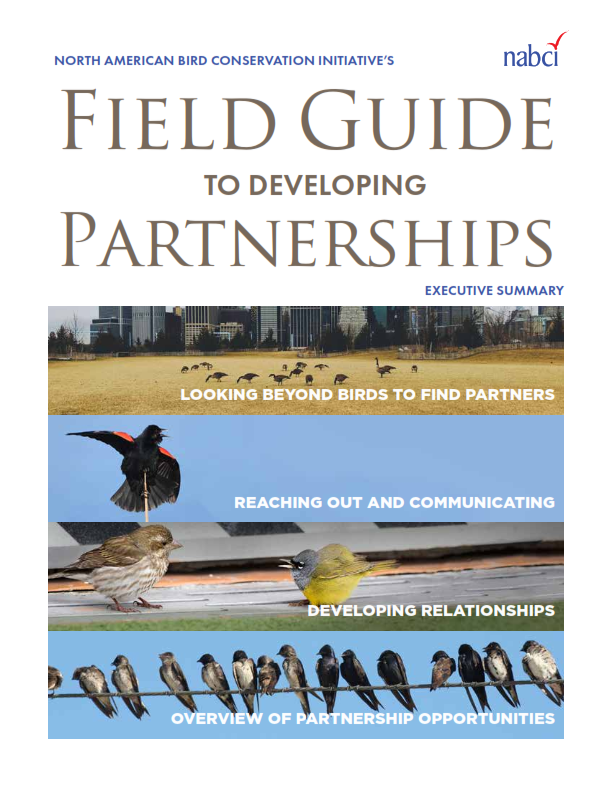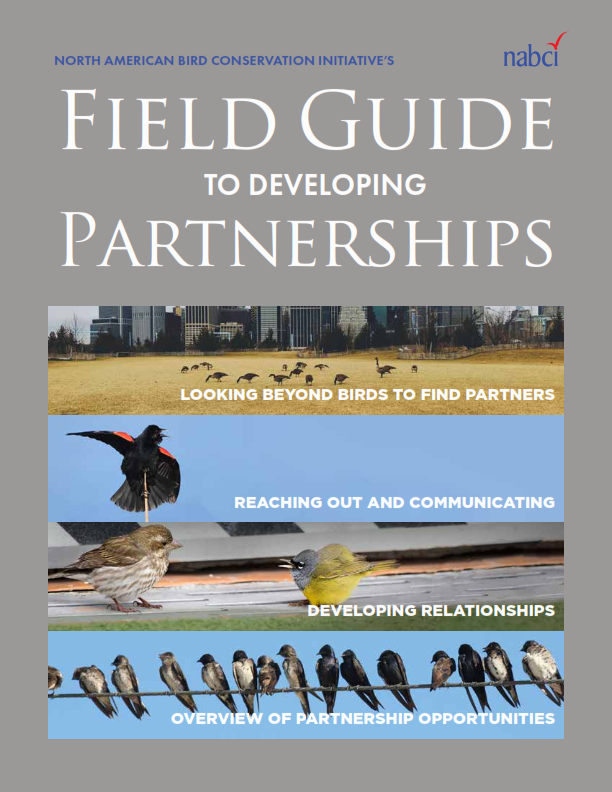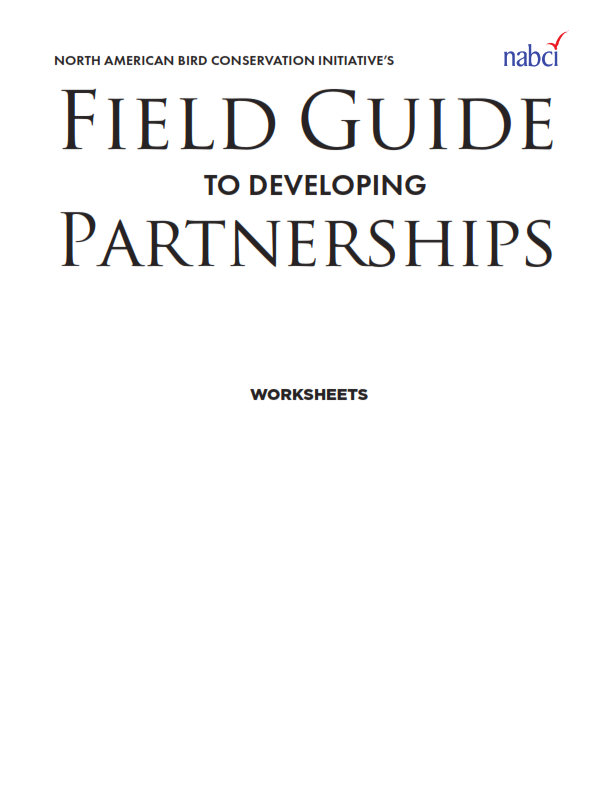Developing mutually beneficial partnerships based on common or complementary goals requires commitment, flexibility, and a desire and capacity to listen and understand the needs, values and challenges of potential partners. This document provides guidance on how to find common goals, effectively reach out to potential partners, and develop lasting relationships that benefit all players.
Looking Beyond Birds to Find Partners
While opportunities always exist to strengthen partnerships among organizations focused primarily on birds or bird conservation, many untapped opportunities abound to develop partnerships with entities whose primary focus is not bird conservation, or that have less frequently been involved in bird conservation. Some outcomes that can result from or be compatible with bird conservation goals include
- improved water quality or increased water availability
- improved human health and community well-being through access to nature, a clean environment, or opportunities for outdoor recreation
- resilient landscapes that provide protection from extreme weather events
- productive working lands
- a strong tourism industry, both domestically and internationally
- corporate sustainability

Salt ponds in the Caribbean owned by the Cargill Corporation can also be profitably managed for shorebirds. © Peter Nijenjuis – Birds Caribbean
For a partnership to be successful, all partners must contribute to – and benefit from – the partnership.
Exploring opportunities based on these goals can open the door to productive partnerships with a diverse group of constituents that can bolster the resources, credibility, or public influence of bird conservation. By exploring local effects and conducting a stakeholder analysis, engaging in opportunities for networking with and learning about organizations whose focus is broader than bird conservation, and researching potential partners, bird conservation organizations can identify entities that might engage in collaboration toward common goals.



